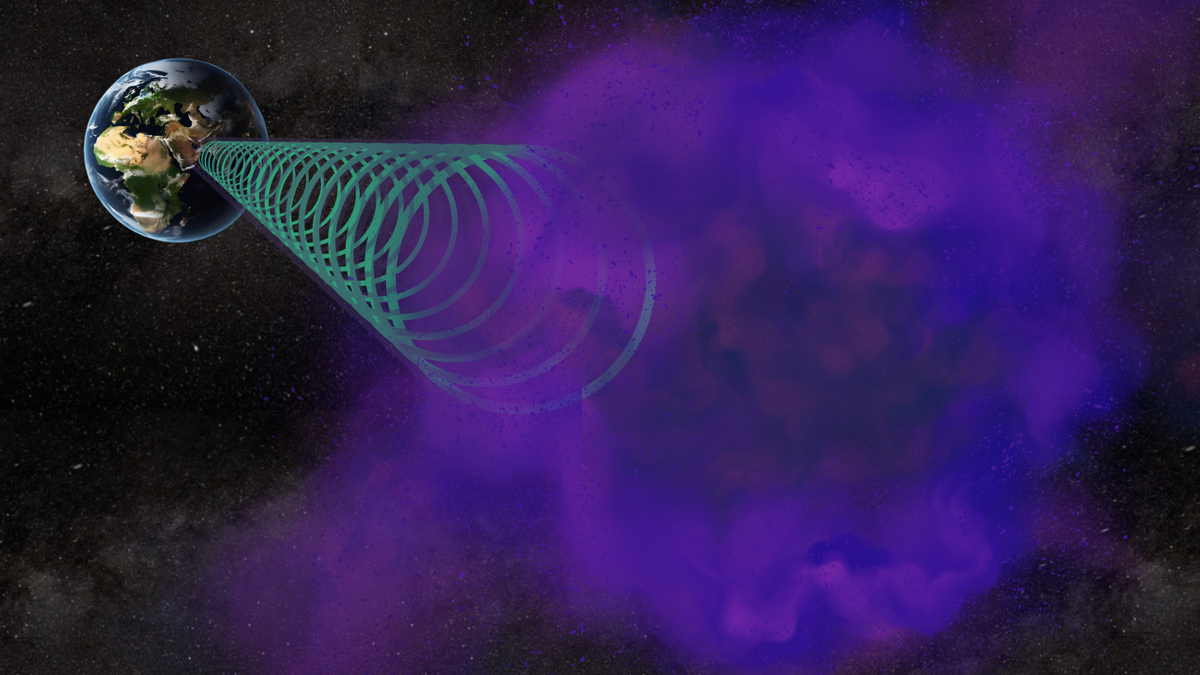Scientists discover hidden secrets inside the moon’s core
While the formation and evolution of the Moon remain debated topics, the nature of its deep interior structure is now clearer.

The existence of the solid core has been demonstrated using data from multiple space missions and lunar laser ranging. (CREDIT: Creative Commons)
Fifty years after Apollo 11's historic lunar landing, a team of scientists from CNRS, Université Côte d'Azur, Côte d'Azur Observatory, Sorbonne Université, and Paris Observatory-PSL have uncovered a groundbreaking revelation about the Moon's internal structure: it has a solid core, similar to Earth's.
This discovery, along with evidence explaining the presence of iron-rich materials in the lunar crust, was published in Nature.
While the formation and evolution of the Moon remain debated topics, the nature of its deep interior structure is now clearer. After decades of speculation and research, it has been confirmed that the Moon possesses a solid inner core surrounded by a fluid outer core, much like Earth. This significant finding results from the combined efforts of scientists from the aforementioned institutions.
Around twenty years ago, researchers identified the Moon’s fluid outer core. Now, the team has discovered a solid inner core with a diameter of about 500 kilometers, which constitutes roughly 15% of the Moon's total size. This inner core is composed of metal with a density similar to iron.
Various methods, particularly those related to the Moon's rotation, previously confirmed the fluid outer core. However, due to its smaller size, the solid core remained undetectable until now. The existence of the solid core has been demonstrated using data from multiple space missions and lunar laser ranging.
Besides the discovery of the solid core, the scientists provided evidence supporting the hypothesis of material movement within the mantle, the intermediate layer between the core and the crust, during the Moon's evolution.
This phenomenon, known as lunar mantle overturn, helps explain the presence of iron-rich elements on the Moon's surface. How did this process occur?
The material could have risen to the surface, creating volcanic rocks that were deposited in the lunar crust. Later, materials too dense to remain on the surface sank back down to the core-mantle boundary.
This research significantly contributes to our understanding of the solar system's history and explains certain events, such as the disappearance of the lunar magnetic field. Initially, the Moon's magnetic field was a hundred times stronger than Earth’s current magnetic field, but now it is almost non-existent.
The findings not only solve longstanding mysteries about the Moon's internal structure but also enhance our knowledge of the dynamic processes that shaped its evolution. As researchers continue to study the Moon, these discoveries provide valuable insights into the early conditions and processes that influenced the formation of celestial bodies in our solar system.
The Moon's core compared to the Earth's core
The moon's core composition differs significantly from the Earth's core in terms of size, composition, and state.
Size and Structure:
- The Earth's core is much larger relative to the planet's size, making up about 15% of its volume and 32% of its mass.
- The moon's core is much smaller relative to its size, accounting for about 1-2% of its mass.
Composition:
- The Earth's core is primarily composed of iron and nickel, with lighter elements like sulfur, oxygen, and silicon.
- The moon's core also contains iron and nickel but is thought to have a higher concentration of lighter elements, such as sulfur.
State (Solid vs. Liquid):
- The Earth's core has a solid inner core and a liquid outer core. This dynamic structure contributes to the generation of the Earth's magnetic field.
- The Moon possesses a solid inner core surrounded by a fluid outer core, much like Earth.
Temperature:
- The Earth's core is extremely hot, with temperatures ranging from about 4,000 to 6,000 degrees Celsius (7,200 to 10,800 degrees Fahrenheit).
- The moon's core is much cooler in comparison, with estimated temperatures around 1,500 degrees Celsius (2,700 degrees Fahrenheit).
Magnetic Field:
- The Earth's liquid outer core generates a strong magnetic field through the dynamo effect.
- The moon currently has a very weak magnetic field. However, evidence suggests that it may have had a stronger magnetic field in the past, possibly due to a once more active core.
These differences reflect the distinct formation histories and evolutionary paths of the Earth and the moon. The Earth, being a larger and more geologically active planet, has retained more heat and has a more complex core structure compared to the relatively smaller and geologically quieter moon.
Note: Materials provided above by the The Brighter Side of News. Content may be edited for style and length.
Like these kind of feel good stories? Get the Brighter Side of News' newsletter.
Joseph Shavit
Head Science News Writer | Communicating Innovation & Discovery
Based in Los Angeles, Joseph Shavit is an accomplished science journalist, head science news writer and co-founder at The Brighter Side of News, where he translates cutting-edge discoveries into compelling stories for a broad audience. With a strong background spanning science, business, product management, media leadership, and entrepreneurship, Joseph brings a unique perspective to science communication. His expertise allows him to uncover the intersection of technological advancements and market potential, shedding light on how groundbreaking research evolves into transformative products and industries.



